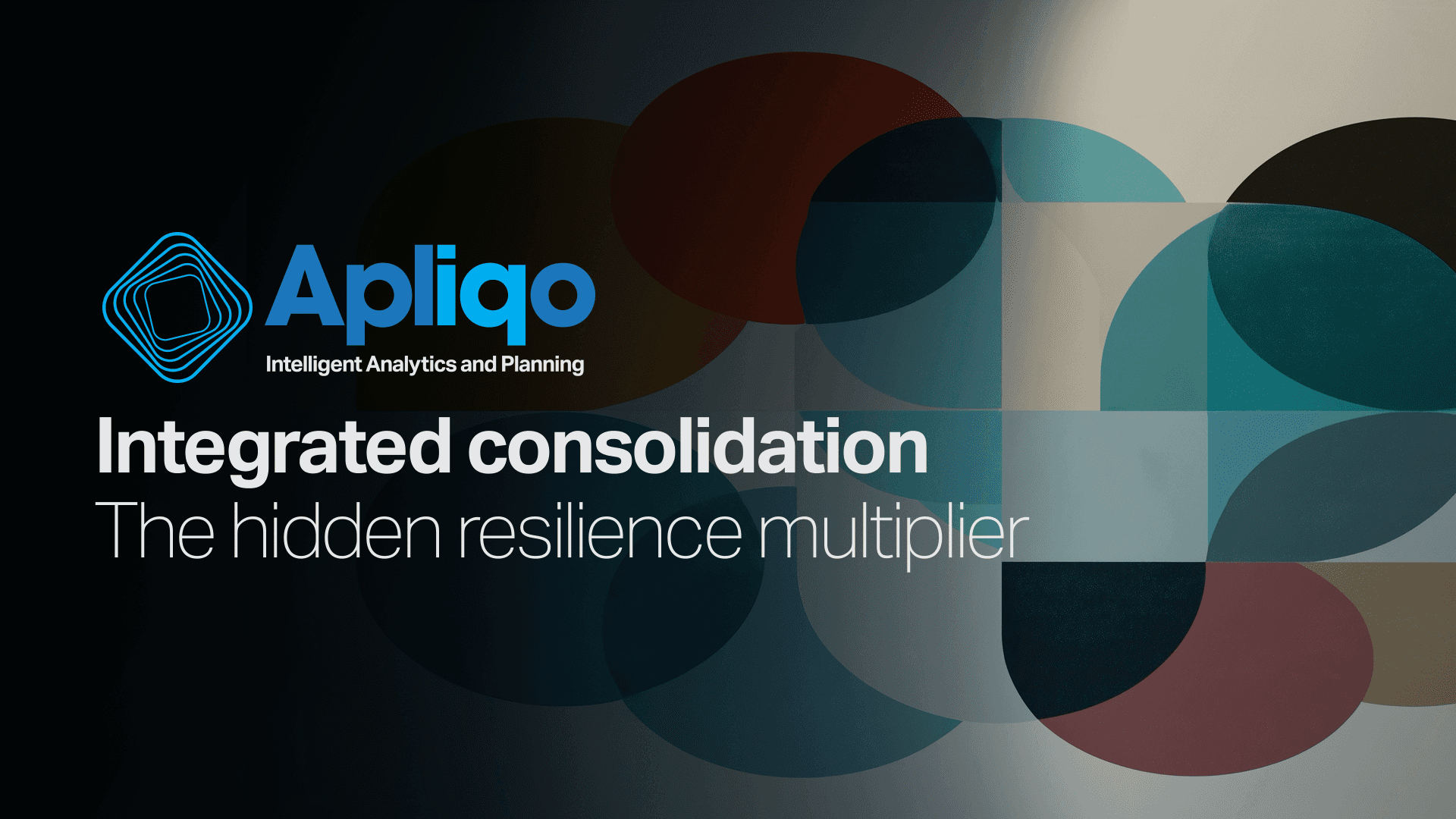Integrating FP&A software with ERP systems: challenges and solutions
This article examines the critical challenges and solutions for integrating Financial Planning and Analysis (FP&A) software with Enterprise Resource Planning (ERP) systems. As organisations seek to bridge operational data with strategic financial planning, they face several significant hurdles that must be addressed to realise the full potential of their technology investments. In today's data-driven financial landscape, the integration of Financial Planning and Analysis (FP&A) software with Enterprise Resource Planning (ERP) systems has become not merely advantageous but essential for organisations seeking to maintain competitive advantage.
08.07.2025
//
7
min read
Abonnieren Sie Apliqo Insights
This critical connection bridges operational data with strategic financial planning, yet many finance teams continue to struggle with implementation challenges that prevent them from realising the full potential of their technology investments. As financial data volumes grow exponentially and decision-making cycles compress, solving these integration challenges has never been more urgent.
The evolving relationship between ERP and FP&A systems
ERP systems serve as the central operational backbone for most organisations, housing transactional data across finance, supply chain, manufacturing, human resources, and other business functions. While robust in capturing and processing day-to-day operations, these systems often fall short of delivering the analytical insights and forward-looking capabilities that modern finance teams require.
FP&A software fills this gap by transforming raw ERP data into actionable forecasts, scenarios, and plans. Yet this synergy can only materialise when both systems communicate effectively — a connection fraught with technical and organisational hurdles that must be systematically addressed.
Key challenges in integrating FP&A and ERP systems
Here are some of the key challenges that arise when integrating your FP&A and ERP systems:
Data structure misalignment
Perhaps the most fundamental integration challenge stems from structural differences between ERP and FP&A systems. ERP systems typically organise data to optimise transaction processing, while FP&A tools require structures optimised for multidimensional analysis.
The chart of accounts in an ERP system rarely maps perfectly to the analytical dimensions needed for meaningful financial planning and this dimensional mismatch creates a translation layer that, if not properly designed, becomes a significant impediment to data flow.
Data quality and governance issues
ERP systems often contain data inconsistencies, duplications, or gaps that become magnified when imported into FP&A tools. Without proper cleansing mechanisms, these quality issues can propagate throughout forecasts and planning models, undermining confidence in analytical outputs.
Additionally, many organisations lack clear data governance frameworks that define ownership, validation protocols, and change management processes across integrated systems, leading to confusion and inefficiencies.
Technical integration complexity
The technical aspects of integration present their own challenges:
Real-time vs batch processing requirements
API limitations and compatibility issues
Security and access control across connected systems
Master data management across disparate platforms
Version control and change management coordination
Many finance teams underestimate these technical complexities, leading to integration efforts that exceed budgets and timelines while delivering suboptimal results.
Organisational resistance and capability gaps
Beyond technical considerations, successful integration requires addressing human factors:
Finance teams may resist new workflows that disrupt established processes
IT departments often prioritise ERP stability over integration flexibility
Skills gaps frequently exist in managing cross-platform data architectures
Competing priorities between operational stability and analytical agility
These organisational challenges often prove more difficult to overcome than technical issues, requiring thoughtful change management approaches.
Effective solutions for seamless integration
Successful integration can be achieved though if you stick to the principles outlined below:
Strategic integration planning
Successful integration begins with comprehensive planning that aligns technical implementation with business objectives.
This planning process should:
Define clear integration goals tied to specific business outcomes
Develop detailed data mapping between ERP structures and FP&A dimensions
Establish governance frameworks before technical implementation begins
Create realistic implementation roadmaps with defined milestones
Identify key metrics to measure integration success
Organisations that invest in thorough planning will achieve better integration outcomes compared to those pursuing ad hoc approaches.
Dimensional modelling and data transformation
Addressing structural misalignment requires thoughtful dimensional modelling:
Create consistent hierarchies and mapping tables between ERP and FP&A structures
Implement transformation logic that preserves analytical integrity
Design flexible dimension handling that accommodates organisational changes
Establish master data management protocols across systems
Document all transformation rules and mappings comprehensively
Leading organisations are increasingly implementing dedicated data layers between ERP and FP&A systems to manage these transformations systematically rather than relying on direct connections.
Integration architecture options
Several architectural approaches exist for FP&A-ERP integration, each with distinct advantages:
Direct integration: Suitable for organisations with simple requirements and limited data volumes, direct connections between ERP and FP&A systems offer implementation speed but limited flexibility.
Data warehouse integration: More sophisticated organisations implement centralised data warehouses that serve as intermediaries between operational and analytical systems, providing greater scalability and consistency.
API-based integration: Modern cloud-based systems increasingly leverage API connections that offer real-time capabilities and greater adaptability to changing requirements.
Hybrid approaches: Many organisations implement combinations of these models, using direct connections for critical real-time needs while leveraging warehouse architectures for comprehensive analytical datasets.
The optimal architecture depends on organisational size, complexity, existing technology landscape, and specific analytical requirements.
Data governance and quality management
Sustainable integration requires robust data governance:
Establish clear data ownership and stewardship roles
Implement automated data quality monitoring and alerting
Create reconciliation procedures between source and target systems
Develop exception-handling protocols for data anomalies
Schedule regular data quality reviews involving both finance and IT teams
Organisations with mature data governance frameworks have fewer integration issues and significantly higher confidence in their planning outputs.
Change management and capability development
Addressing organisational challenges requires dedicated change management:
Involve end users in integration design and testing
Develop comprehensive training programmes tailored to different user groups
Create detailed documentation of new processes and workflows
Establish centres of excellence that bridge finance and technology expertise
Implement phased rollouts that allow teams to adapt gradually
Progressive organisations are increasingly establishing dedicated FP&A technology teams that maintain integration integrity and drive continuous improvement of connected systems.
Unlocking transformative potential
The integration challenges between FP&A software and ERP systems are substantial but entirely surmountable with proper strategy, technology, and organisational approaches. When successfully integrated, these connected systems become more than the sum of their parts—they create a continuous financial intelligence loop that transforms reactive financial management into proactive financial leadership.
Forward-thinking organisations are already leveraging these integrated environments to compress planning cycles, increase forecast accuracy, and reduce finance team effort on data preparation. These benefits directly translate to improved decision agility and competitive advantage in volatile markets.
As integration technologies continue to advance, finance teams that master these connections position themselves at the forefront of financial digital transformation where operational precision meets strategic insight. For organisations ready to embark on this journey, platforms like Apliqo offer purpose-built solutions that bridge the ERP-FP&A divide, allowing finance teams to focus on insight generation rather than integration complexity.
The question isn't whether to integrate these critical systems, but how quickly you can harness their combined power to accelerate your organisation's financial transformation.









